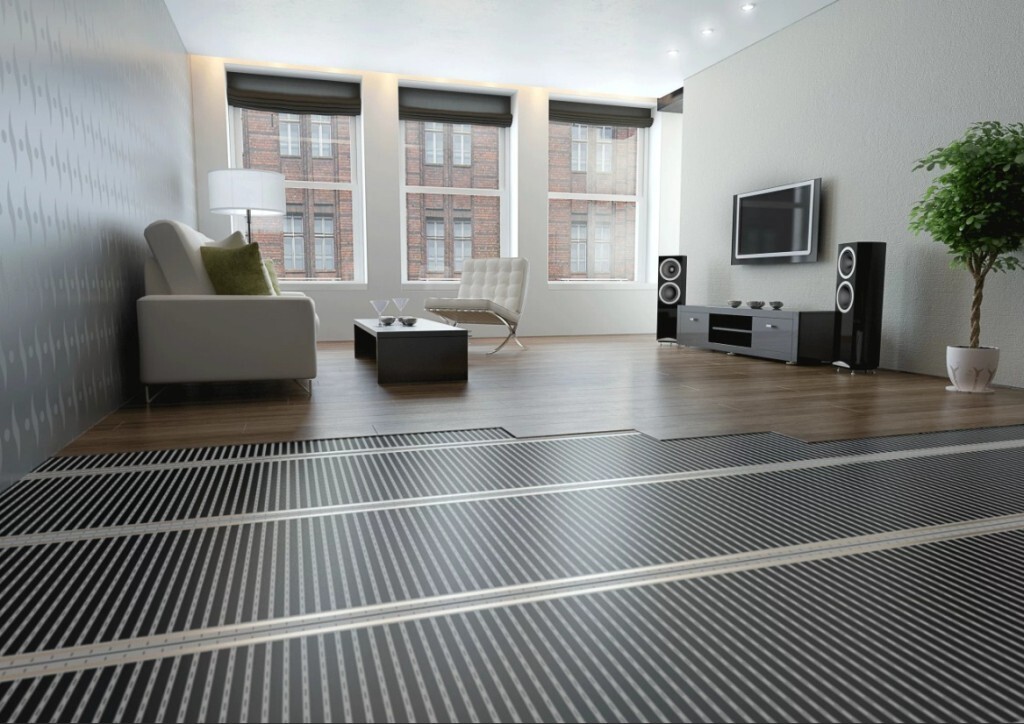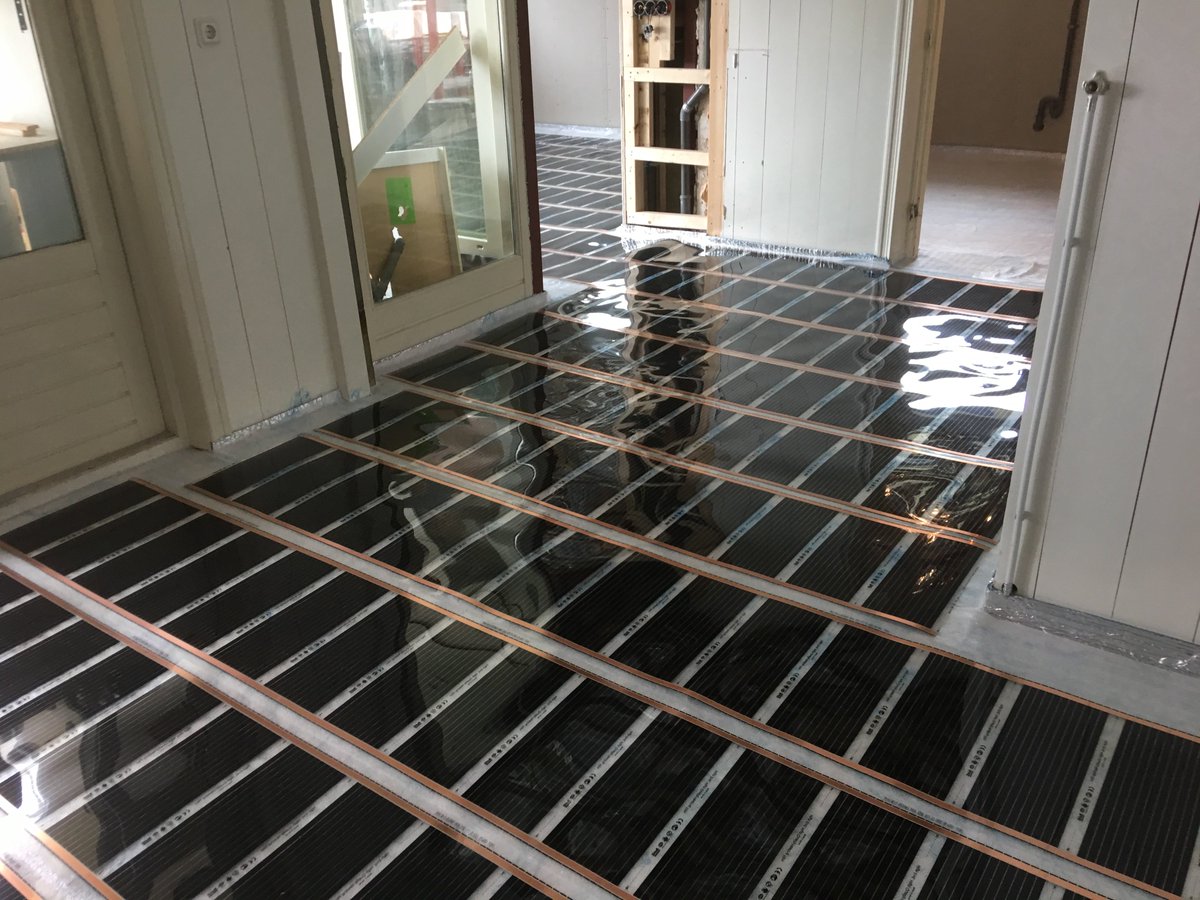Are you tired of dealing with drafty, cold rooms in your home? If you’re looking for an efficient and effective way to heat your home while providing maximum comfort, then home radiant heating systems may be the perfect solution. With a wide range of options, you can find a system tailored to your unique home and budget. In this blog post, we’ll explore the benefits of radiant heating systems and how they can make your home cozy all year round. Read on to learn more about how these systems work and why they may be the key to ultimate comfort.
The Radiant Heating System Cost is Economical
If you’re tired of high energy bills and fluctuating indoor temperatures, it’s time to consider a radiant heating system for your home. Not only will it provide comfortable and consistent warmth, but it’s also an economic investment that can save you money in the long run.
Compared to traditional forced-air heating systems, radiant heating uses less energy to heat the same space. That’s because it directly warms the objects and people in the room, rather than wasting energy on heating the air first. As a result, your home will feel warmer at lower temperatures, and you’ll see a significant reduction in your monthly utility bills.
Moreover, radiant heating systems are durable and require less maintenance than other heating systems, meaning fewer costly repairs and replacements. And with many manufacturers offering energy-efficient models, you can feel good about reducing your carbon footprint while enjoying a comfortable and cozy home.
The Radiant Heating System Cost is an investment in your home and your long-term comfort. So if you’re looking for an economical heating option that will save you money and energy, consider switching to radiant heating.
 The Benefits Of Radiant Heating
The Benefits Of Radiant Heating
Radiant heating is a heating system that uses a series of tubes or panels installed beneath a home’s flooring, walls, or ceilings to generate heat. Unlike conventional heating systems that rely on hot air to warm up a space, radiant heating directly warms the objects and surfaces in a room. Here are some of the benefits of using a radiant heating system in your home:
- Energy Efficient: Radiant heating systems are much more efficient than conventional ones. Because they heat objects directly, they can maintain a comfortable temperature at a lower thermostat setting, resulting in up to 30% energy savings.
- Cost-Effective: Despite the initial installation costs, radiant heating systems are a cost-effective heating solution over the long run. With a radiant heating system, You can save a significant amount of money on your energy bills every month.
- Consistent Heating: Unlike conventional heating systems with hot and cold spots, radiant heating provides consistent heating throughout a room. It means that you can stay warm and comfortable no matter where you are in the room.
- Improved Air Quality: Radiant heating does not circulate air like conventional heating systems. It means that allergens, dust, and other particles are not blown around the room, which can result in improved indoor air quality.
- Quiet Operation: Radiant heating systems are incredibly quiet. They do not make any noise because they do not require fans, blowers, or other moving parts to circulate warm air.
The Different Types Of Radiant Heating
Radiant heating can come in various types, each with unique advantages and considerations. Here are some common types of radiant heating systems you can consider for your home.
- Hydronic Radiant Heating: Hydronic radiant heating utilizes hot water to warm your floors, walls, or ceilings. The heated water is pumped through a network of pipes installed beneath the floor, allowing the heat to radiate upwards and provide warmth to your space. This type of system is versatile, as various sources, including solar energy, geothermal heat pumps, or traditional boilers, can power it.
- Electric Radiant Heating: Electric radiant heating utilizes electrical wiring or heating panels to generate and distribute heat throughout your home. These systems are easy to install and control, making them popular for retrofits or additions. They can also be integrated with smart home automation systems to improve energy efficiency and convenience.
- Radiant Ceiling Panels: Radiant ceiling panels are installed in your ceiling, emitting heat downwards to warm up your space. This system is beneficial for rooms with high ceilings or limited wall space. The panels can be electrically or hydroponically powered, providing a range of options.
- Radiant Floor Heating: Radiant floor heating systems utilize hot water or electric coils installed beneath your flooring. This system ensures that your home is evenly heated from the ground up as heat rises. The system can be installed beneath any flooring material, including tiles, wood, or carpet.
- Radiant Wall Heating: Radiant wall heating systems are similar to floor heating systems, except the heating elements are installed within your walls. The walls are heated, radiating warmth to your room, and keeping it comfortably warm even during cold winter.
Each type of radiant heating system offers unique benefits and installation requirements. By assessing your home’s heating needs and space availability, you can choose the best system that provides efficient and comfortable heating for your space.
How to Choose the Right Electric Radiant Heat Ceiling Panels?
When it comes to radiant heating systems, choosing the right Electric Radiant Heat Ceiling Panels is crucial. Here are some essential factors to consider:
- Room Size: The size of the room plays a key role in determining the number of panels you will need. Measure your room carefully and determine the optimal panel size to heat the space.
- Heating Capacity: The heating capacity of a panel is measured in watts. Ensure you choose a panel with enough heat output for your room size.
- Durability: Look for electric radiant-heat ceiling panels built to last. Choose high-quality materials that can withstand the wear and tear of daily use.
- Energy Efficiency: An energy-efficient panel can save you money on utility bills in the long run. Look for panels with a high Energy Star rating and low power consumption.
- Ease of Installation: The installation process for electric radiant-heat ceiling panels should be straightforward. Choose a system that is easy to install and maintain.
Considering these factors, you can choose the perfect electric radiant-heat ceiling panels for your home heating needs. Investing in a high-quality radiant heating system can bring you many years of comfortable living and cost savings.
Installation Considerations for Radiant Heating Systems
Installing a radiant heating system in your home requires careful planning and consideration. Here are some factors to keep in mind when it comes to installation:
- Flooring: The type of flooring in your home will impact the radiant heating system you can install. For example, electric radiant-heat ceiling panels work well with suspended or dropped ceilings, while radiant floor heating best suits tile, concrete, or wood floors.
- Insulation: Proper insulation is essential to ensure efficient heating. A poorly insulated home will lose heat quickly, requiring your radiant heating system to work harder and increase energy costs. Make sure your home is well-insulated before installing a radiant heating system.
- Sizing: The size of your radiant heating system will depend on the size of your home and the level of insulation. Work with a qualified professional who can properly size your system to ensure optimal performance.
- Thermostat: A programmable thermostat is necessary for any radiant heating system. It allows you to set different temperatures for different times of the day, saving energy and reducing your heating costs.
- Electrical requirements: Electric radiant heating systems require a dedicated circuit and should only be installed by a licensed electrician.
- Professional installation: While installing a radiant heating system yourself is possible, hiring a qualified professional is always best. They will have the expertise and experience to ensure your system is installed correctly and performs optimally.
By considering these installation considerations, you can ensure that your home radiant heating system provides efficient, cost-effective, and comfortable heating for years to come.
Maintenance and Care for Radiant Heating Systems
Like any other heating system in your home, your radiant heating system also requires proper maintenance and care to ensure it operates efficiently. The good news is that radiant heating systems are relatively easy to maintain and require less maintenance than traditional ones.
One of the most important things you can do to keep your radiant heating system functioning properly is to schedule regular inspections by a licensed HVAC technician. They can check your system for any problems and ensure it is operating efficiently.
Additionally, it’s essential to keep your radiant heating system clean. Regularly cleaning your radiant heating panels or pipes can help prevent dirt and dust buildup that impede the system’s efficiency. Use a soft-bristled brush or a vacuum to clean the panels or pipes.
Enhancing Comfort with Infrared Floor Heating: Design and Control Options
When it comes to achieving maximum comfort in your home, your radiant heating system’s design and control options can play a big role. One popular type of radiant heating is Infrared Floor Heating. Infrared heating technology utilizes energy-efficient heating elements that emit long-wave infrared energy to warm up your living space. Unlike other types of heating, infrared heating panels can be installed under your flooring, allowing for a cozy and luxurious experience every time you step on the floor.
Design options for infrared heating can vary greatly. For example, some homeowners opt for a full floor installation, where the heating panels are installed under the entire surface area of the flooring. Others prefer to install panels in certain rooms or zones within the house, allowing personalized comfort control in each space.
Control options for infrared heating also offer convenience and energy savings. Thermostat systems allow homeowners to program specific temperatures and times of day, ensuring that their floors are warm when needed without any excess energy consumption. In addition, smart home technology allows homeowners to remotely control their infrared-floor heating systems via a smartphone app or virtual assistant, further maximizing convenience and comfort.
Conclusion
Radiant heating systems offer a unique way of keeping your home cozy and warm while also providing various other benefits like cost-effectiveness and better air quality. With various types to choose from, it’s important to select the one that best fits your specific needs and preferences.
| Other Good Articles to Read |
| Blogs 97 |
| Blog Stitution |
| Blogs Unplugged |
| Blogs Cotch Rouge |
| Blog Signatr |
| Blog Sintonias |
| Blog Zilla |
| Consumer Forums |
| Finance Forums |
| G Blogs |
| Too Blog |



